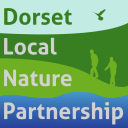Cllr Felicity Rice, BCP Council & Independent LNP Board Member
BCP and Dorset councils are developing their local plans. These are 3-5 yr long pieces of work which have obvious implications on wildlife, such as biodiversity targets on individual plots or greenbelt release, or managing SANG’s or SSRI’s. However, in order for us to all move around, in the urban environment, a significant proportion of land is allocated to one of the most space intensive forms of transport – the private car. For example, frontdrives to store a car overnight, a wide roads and then space to park the car during the day. The majority of time, the car is physically empty, but using up valuable urban space that cannot be used for anything else, and nearly always biodiversity sparse or destructive (ie air pollution/plastic pollution from tyres/brakes). Using a car to move around requires 10 times more space than a bicycle, and 70 times more space if travelling over 50mph. It also cost the economy to have people moving by car in the urban area, compared with an economic boost by those walking or cycling.
But there are ways to design our urban areas of Dorset like Poole, Bournemouth, Ferndown, Dorchester so that less space is used for private car transport. Go for a walk anywhere in an urban environment and you can see the number of front gardens that have been paved over partially, or completely, over the last decade, with new developments prioritising space for private car storage compared to any wildlife. For example one recent development in Poole involved tarmacking over three gardens, to create car parking for 18 car spaces, for 9 homes, with very small gardens laid with plastic grass. The total surface area for the development was larger for the car access and the car parking than for accommodation or for green space.

If you can imagine developing our towns so that this space, currently allocated to private cars, was changed, so that people are able to journey less, walk, cycle, scoot, e-cycle, e-scoot, dog cargo cycle, mobility scoot, use the bus and have access to car share hire, then you can start to imaging the amount of space that could be available to 1) stop the removal of current green space for parking and 2) the potential to create changes to our road spaces/car parks/front drives in order to use that space for wildlife and organic growing of food.
One way to do this, is to design our urban spaces around a 15 minute walk/cycle from the various secondary schools. If our kids grow up with their own independent, efficient, clean, cheap, healthy and enjoyable transport in the form of a cycle, scooter or walking, then we will grow a generation of adults can enjoy having front drives for wildlife, that can have urban farms instead of car parks, and fruit street trees instead of parking.

How do we do this? Three-quarters of children in the UK live within a 15 minute cycle ride of a secondary school. ‘Hands up’ survey’s in schools reveals that most kids would like to cycle to school, however only 2% currently do in the UK. This shows the huge suppressed demand. Why do they not cycle?
The reason for this? Ask any parent, child or teacher and it’s always the same response: ‘‘It’s way too dangerous because there are too many people rushing around in cars’’. And this is true, road traffic collisions are the leading cause of death for children aged 5-19 in the UK* including 4 children in Dorset over the last 5 years.
Potential area within a 15 minute cycle ride to Poole High School.
In the same way that we would not expect a child to die whilst in the classroom, wouldn’t it be great if we could have the same expectation for getting to and from school.
One – identify all the roads around a school (within the 15 minute radius) that are small residential roads. Identify which of those are used for ‘rat running’ and install a series of planters in those roads. This very quickly creates a network of quiet residential streets around a school. (in effect, creating lots of cul de sacs with through access when walking/scooting/cycling).
Two – once you have the quiet roads, then identify where safe crossings are needed to connect the quiet roads across busier roads – and plan for a series of zebra crossings or suitable crossings (eg, perhaps a bridge if a railway, or lights if a multilane road).
Three – Look at the main roads and identify how protected cycle lanes could be installed, designed so that teenagers would feel safe to use them.

By creating these networks of efficient and reliable transport networks, we could see complete reversal of the loss of front gardens and their biodiversity, and we could see wildlife parklets instead of parking spaces. As well as a massive reduction in carbon footprint for travel, as children cycle to school, they will grow up connected to wildlife because they will be able to hear and see the active wildlife as they travel.
* J Read, iWalk, 2017
